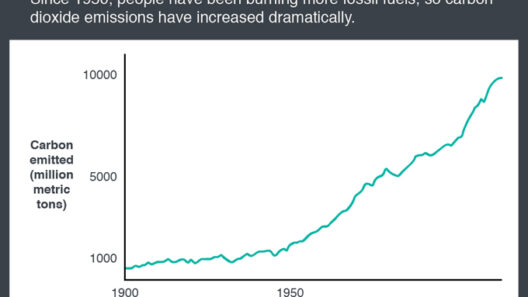In a world where climate change manifests through unprecedented weather patterns, rising sea levels, and diminishing biodiversity, the pressing need for actionable solutions has never been more paramount. As the global community grapples with the ramifications of climate change, an emerging paradigm emphasizes the undeniable power of local action. This approach posits that communities, imbued with a sense of agency and interconnectedness, hold the key to combating the looming threat of global warming. By harnessing localized efforts, individuals can create a ripple effect that culminates in global impacts.
Understanding the significance of grassroots movements is crucial. Local initiatives, often spurred by passionate residents, can address specific environmental challenges pertinent to their region. These initiatives frequently encompass a diverse array of activities, from community gardens and clean-up campaigns to renewable energy installations. When individuals unite, they cultivate a sense of belonging and stewardship towards their environment, transforming apathy into actionable commitment.
One of the most potent tools in a community’s arsenal is education. Knowledge is not only power; it is the catalyst for transformative change. Engaging workshops and informational sessions can elucidate the stark realities of climate change while empowering residents with the knowledge to make informed decisions. For instance, disseminating information about waste reduction, sustainable agricultural practices, and the benefits of native landscaping can foster a sense of responsibility and inspire innovative local solutions.
While educational initiatives are vital, the importance of tangible action cannot be understated. Community-driven projects, such as tree planting and the numerous benefits of urban greening, serve multiple purposes. They not only improve local air quality and mitigate urban heat islands but also enhance community well-being and resilience. Such initiatives invigorate community spirit, creating green spaces that are vital for both ecological and societal health.
Furthermore, communities can wield significant influence through advocacy and policy change. Local action often extends beyond the immediate vicinity; it can inspire significant political shifts. By collectively voicing concerns and priorities, communities can influence local governance to enact environmentally responsible policies. For example, campaigns aimed at reducing single-use plastics or advocating for sustainable transportation options can lead to legislative changes that resonate beyond municipal boundaries. This underscores the critical interplay between local activism and broader systemic change.
The concept of permaculture embodies the principles of sustainability and resilience. By designing agricultural systems that work in harmony with natural ecosystems, communities can become less reliant on external resources and cultivate food sovereignty. Community-supported agriculture (CSA) models exemplify this approach, allowing residents to engage directly with the food they consume while supporting local farmers. This not only minimizes carbon footprints but also fosters a connection to the land, making communities more conscientious stewards of their resources.
Another pivotal aspect of local action is its emphasis on waste management and recycling. Communities can implement innovative solutions such as zero-waste initiatives, which aim to eliminate landfill waste through careful planning and community involvement. Education around composting and upcycling materials can transform communities into models of sustainability. The shift from a linear to a circular economy at the community level not only reduces the strain on landfills but also generates local jobs and stimulates economic growth.
Moreover, innovative transportation solutions can drastically reduce carbon emissions. Communities can work toward establishing bike-sharing programs, enhancing public transportation options, or implementing car-free days. By prioritizing walkable neighborhoods, urban areas can encourage healthy lifestyles while reducing reliance on fossil fuels. This transformation requires a collective reimagining of transportation, unveiling a path toward cleaner air and reduced congestion in everyday life.
Inextricably linked to local action is the intrinsic value of collaboration. Successful initiatives often arise from partnerships among diverse stakeholders, including local governments, businesses, nonprofits, and residents. These collaborations facilitate resource sharing, amplify messaging, and foster a sense of shared responsibility. When communities unite towards a common goal, they not only amplify their impact but inspire others to join the movement.
Technology, too, plays a transformative role in local climate action. The proliferation of environmental apps, social media campaigns, and online platforms can enhance community engagement and awareness. For instance, citizen science initiatives encourage individuals to collect data on local flora and fauna, enhancing understanding while simultaneously contributing to scientific research. These digital tools foster connections, enabling communities to exchange ideas and strategies in real-time.
As we consider the multifaceted approach to combating global warming, the imperative of inclusivity must be highlighted. Ensuring that local action initiatives are accessible to all community members, regardless of socio-economic status, is vital. Programs that prioritize equity can bridge gaps, allowing marginalized voices to be heard and included in the decision-making process. Inclusive efforts not only strengthen communities but also cultivate a sense of belonging and purpose among residents.
In summation, the conversation around fighting global warming is evolving. The promise of local action reveals a vast reservoir of potential, urging communities to reclaim their agency in the face of an overwhelming global crisis. By fostering education, advocating for policy change, and cultivating collaborative efforts, communities can turn local initiatives into global movements. The narrative shifts from helplessness to empowerment, from isolation to collective action. It is through localized responses that we can forge a sustainable future, one where communities are not only resilient but thriving amidst the challenges posed by climate change.
Ultimately, reimagining our approach to environmental stewardship invites each of us to participate actively. It compels us to recognize that every localized endeavor contributes to a larger, transformative narrative. In the end, the actions taken today at the community level will shape the world of tomorrow. Local action indeed holds the capacity for global impact.







